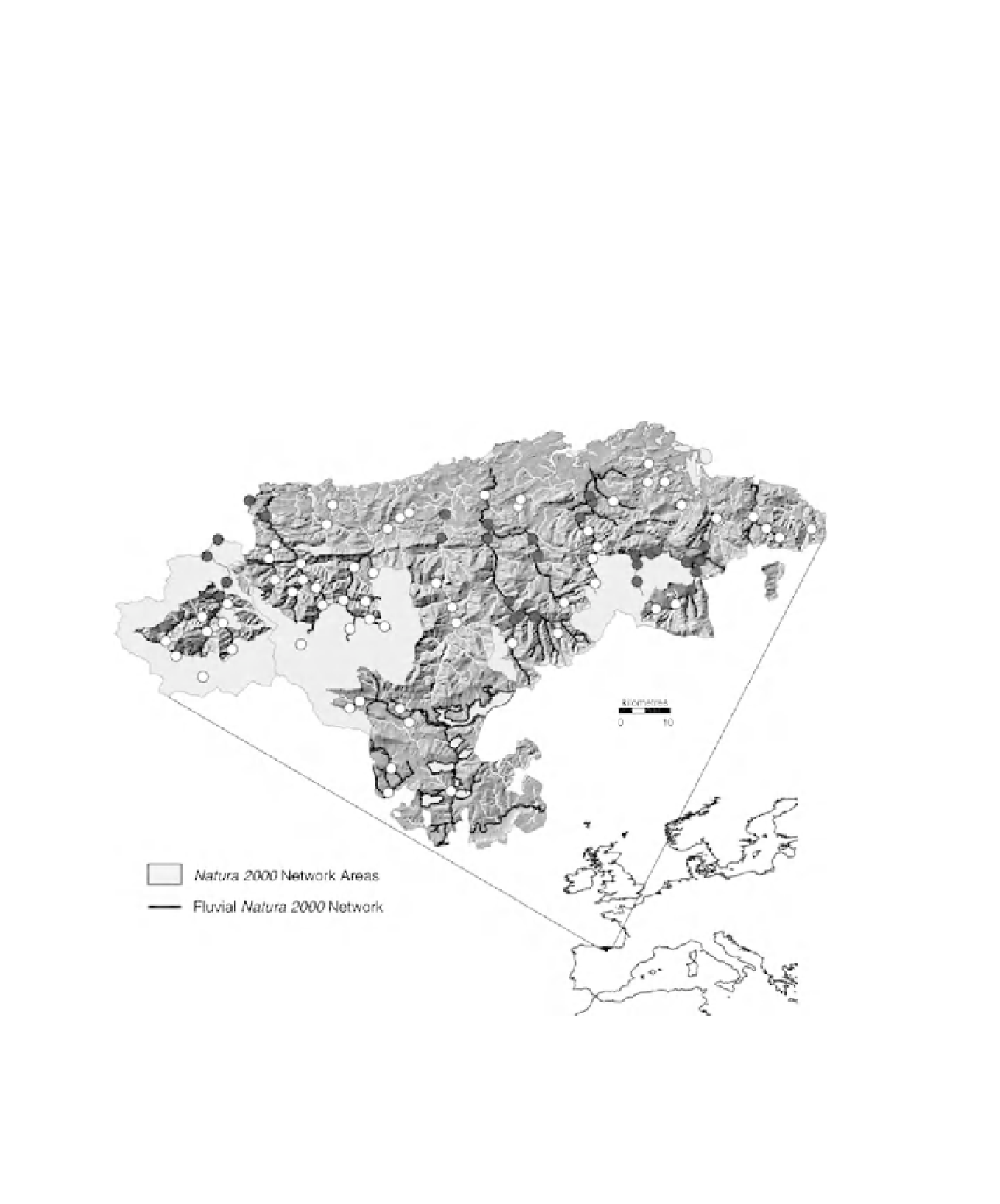Geoscience Reference
In-Depth Information
and the longer-term prospects for sustaining
habitat area or population size (Primack, 2008).
Ideally, conservation status assessment should
take into account future environmental conditions
by predicting the consequences of management
practices and other pressures so that realistic long-
term conservation objectives can be set and the
effectiveness of measures to achieve them properly
evaluated. The potential effects of climate change
on river ecosystems are particularly relevant in this
respect (Ormerod and Durance, this volume).
This chapter presents a new approach to
assessing conservation status, using alder-ash
(
Alnus glutinosa
-
Fraxinus excelsior
) alluvial forest
habitat and Atlantic salmon (
Salmo salar
) occurring
in the
Natura 2000
river network of Cantabria,
northern Spain, to demonstrate how it works. The
method evaluates conservation status in relation to
the ecological requirements of habitats and species
and the integrity of ecosystem functioning (IH
Cantabria, 2010). The two case studies demonstrate
how specific indicators such as distribution range,
habitat structure, population composition and
vulnerability to human activities are used and
integrated
to
assess
overall
conservation
status
(Soul e and Orians, 2001; Primack, 2008).
Study area
The
study
area
covered
the
river
basins
in
the
province
of
Cantabria,
northern
Spain
(Figure
16.1).
Cantabria
is
a
mountainous,
coastal region and both these
characteristics play
Figure 16.1
The
Natura 2000
river network in Cantabria, showing survey sites where Atlantic salmon were present (
•
)
and absent (
◦
) during July-September 2010.

